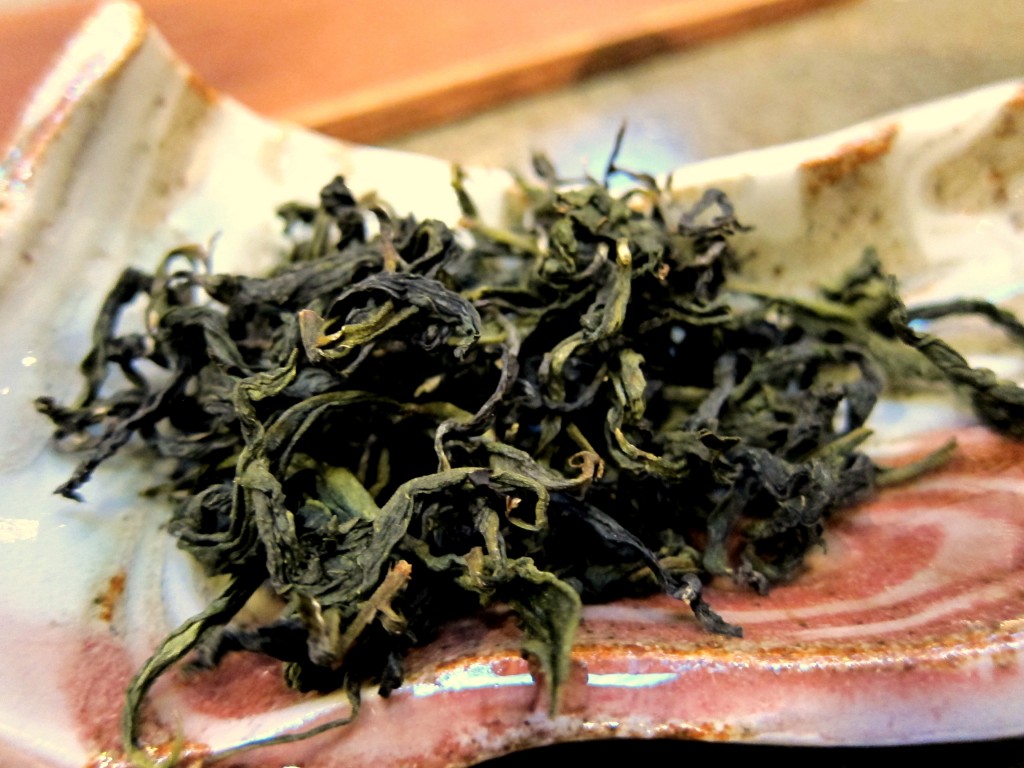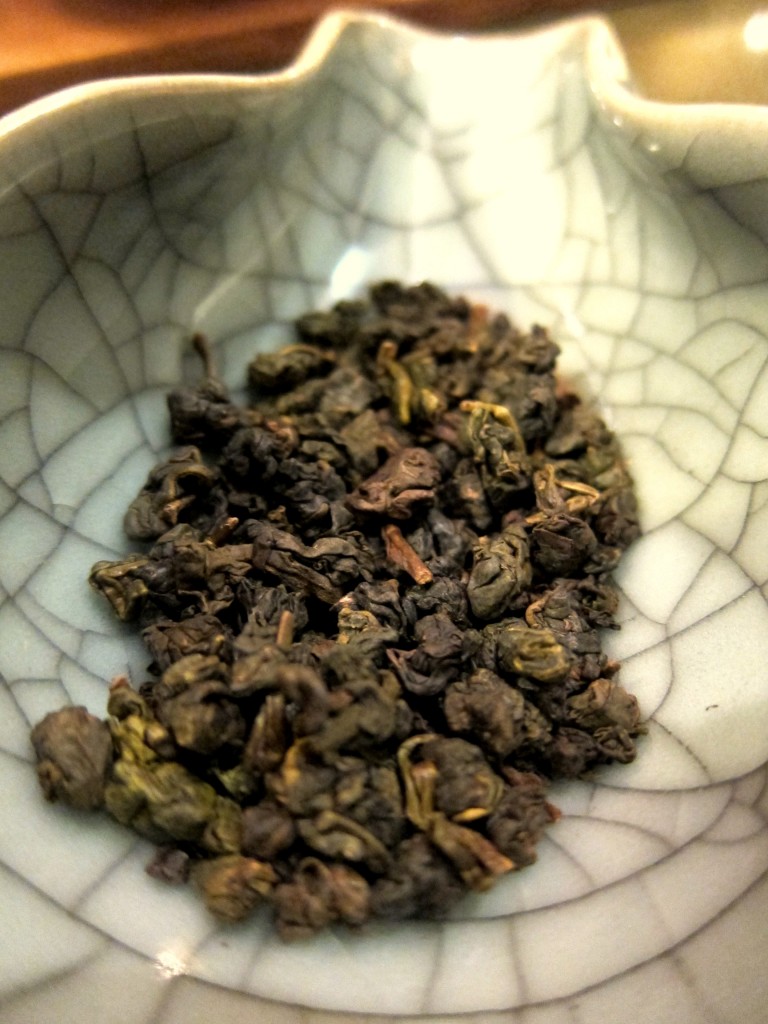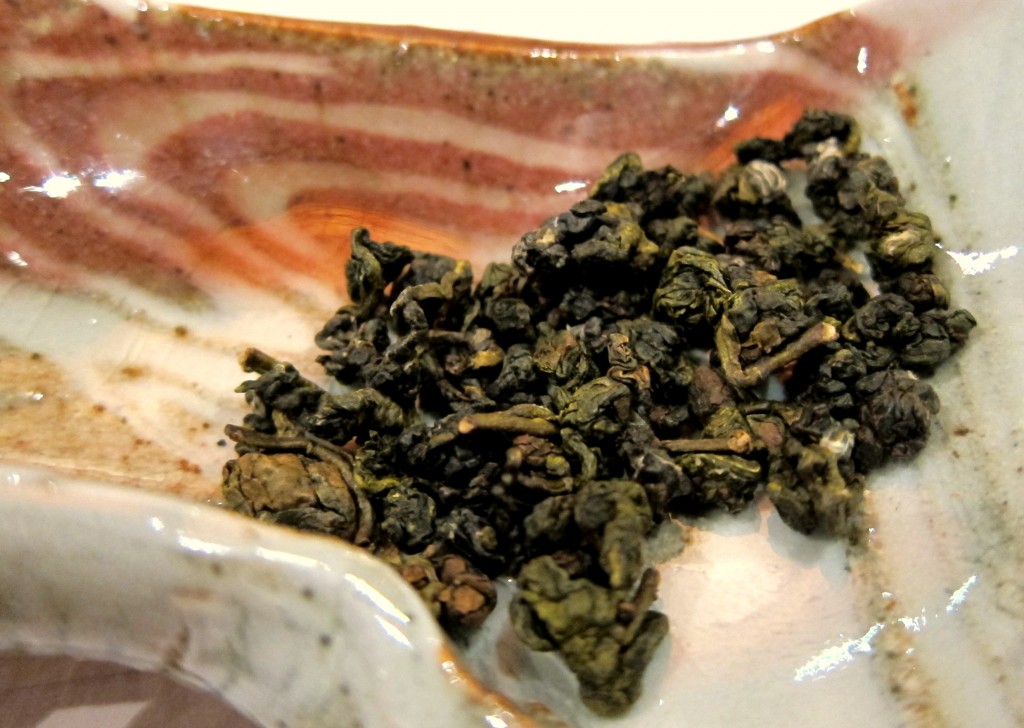Last week we had 3 kinds of Chinese oolongs. This week is 3 kinds of Taiwainese oolong. The difference between Chinese and Taiwanese teas? The region in which they were grown, which includes the soil, the climate, the biodiversity, etc. The harvest affects the taste, too. What we’ve tried up to now at Teance were from the spring 2011 harvest, but today’s teas are from the winter 2011 harvest. There are mainly 2 harvests per year to let the tea plants regenerate healthily. Taiwan is known to produce some of the best oolongs, and their oolongs are aromatic.
A side note on the tea plant (Camellia sinensis) from Teance manager Darius: there are 2 kinds:
— Camellia sinensis sinensis: used to make white, green, and oolong teas
— Camellia sinensis puer: used to make puer and black teas
Now onto today’s samples, all of which require rinsing:

1. Bao Chong: (both a varietal of C. sinensis and a style)
This tea is a signature oolong of Taiwan, the most produced and most known Taiwanese oolong. It is also the lightest in flavor because it is the least oxidized oolong (only 20%), so it is almost green. In fact, it looks green. Bao Chong is twisted (as opposed to rolled into a ball, like Yellow Gold), so it requires less steeping due to the bigger surface area than the rolled kind. The steeping time is ~ 45 s, but Darius emphasizes the importance of checking the color instead of measuring the time to determine if a tea is oversteeped, since the time can change with the size of the gaiwan, the amount of tea vs water, the water temperature, etc. Bao Chong should give a dark greenish yellow. It smells of gardenia, and there was some buttery note.

2. Charcoal-fire-roasted Tung Ting: (also a varietal)
Harvested from the Tung Ting mountain in Taiwan (pronounced “Dong Ding”), this tea is however a low mountain tea (grown at 700 m). Side note: higher elevation means better quality, to be classified as a high mountain tea, the plant must be grown at at least 800 m.
As indicated by its name, this tea was roasted in a bamboo basket placed in charcoal, the basket is rotated every 15 minutes. It has high oxidization (~ 80%).
When steeped correctly, it should have a light golden orange color. This was a difficult tea to steep, we kept oversteeping it, making a yellowish brown color and a sharp smell like tobacco. Even when correctly steeped, others (including Darius) have remarked that this tea smells like cannabis. I think it’s smoky and salty. It is bitter at first with a very hidden sweet aftertaste, but it gets more buttery as it cools.
Not many of us, myself included, liked it.

3. Royal Courtesan: (also known as Guifei Oolong or Oriental Beauty, but DIFFERENT from Taiwan Beauty)
Before harvesting, the tea leaves were left to be munched on by the tea leaf hoppers (Cicadellidae: Jacobiasca formosana (Paoli)), who extract the bitter juice from the leaves and start the oxidization process. This tea is harvested in the summer because that’s the only time the bugs appear. It smells light, sweet, natural, and there’s no dry or roasted smell. After steeping for ~ 20 s, it shows a light citrus yellow. The light taste is similar to that of White Down, but it stays much longer.
It could be my immature steeping skill, but the Chinese oolongs seem sweeter and richer than the Taiwanese oolongs. In other words, Taiwanese oolongs have a straight, narrow, barren kind of taste.